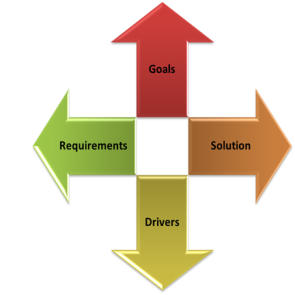 There is probably no time when there are not competing forces influencing the direction in which a business travels and how it operates.
There is probably no time when there are not competing forces influencing the direction in which a business travels and how it operates.
The response that a business makes to these competing influences is a measure of its maturity.
When establishing a strategy a business will have a vision and intermediate goals shaping all subsequent activity and supporting progression towards their realisation.
Not living in an ‘ideal world’ there will be situations that arise that may require
- Resetting the goals.
- Changes of business direction affecting business strategy.
- Major change, affecting the very vision itself.
External drivers such as
- Competitive pressures;
- Customer demand;
- Financial landscape and
- Regulatory change
can have a significant effect on a business forcing it to reassess what it is doing and how it is doing it.
Where there is no capability to assess the impact of these, a business may not respond as effectively as it might.
An Enterprise Architecture provides a tool through which appropriate analysis can take place. The ability to establish a linkage between any specific driver and relevant business areas provides a mechanism through which impact may be modeled. With an understanding of the impact that drivers can impose it becomes feasible to model ‘what if’ scenarios allowing the business to make an optimal response.
One danger to be avoided when reacting to business drivers is in the selection of a ‘solution’ without first understanding what problem is to be addressed.
It is extremely easy for a business to say
- “what we really need is …”
- “Let’s buy product ‘X’ it’s the answer to all are needs”
- “Company Y has this product. We should also have it”
Selecting a solution first tends to drive a business in directions in which it may not wish to travel.
Adopting a solution without significant prior thought and analysis can
- Impose business processes on users that require significant change but offers little benefit
- Introduce new and unsupported technology requiring new skillsets and resources.
- Add functionality, requiring financial input but does not progress the business towards its vision.
- Redirect activity at the expense of other more important parts of the business.
An Enterprise Architecture, coupled with processes supporting its use can provide the business with the means to respond to changed business drivers when they occur.
Process and governance together gives the user of an Enterprise Architecture the ability to provide the business with solutions that satisfy their requirements. Solutions can be established that respond to change and not be its cause.
An Enterprise Architecture, when responding to competing influences, can assist by allowing the business to put ‘the horse in front of the cart’

Pingback: Enterprise Architecture – managing compet...